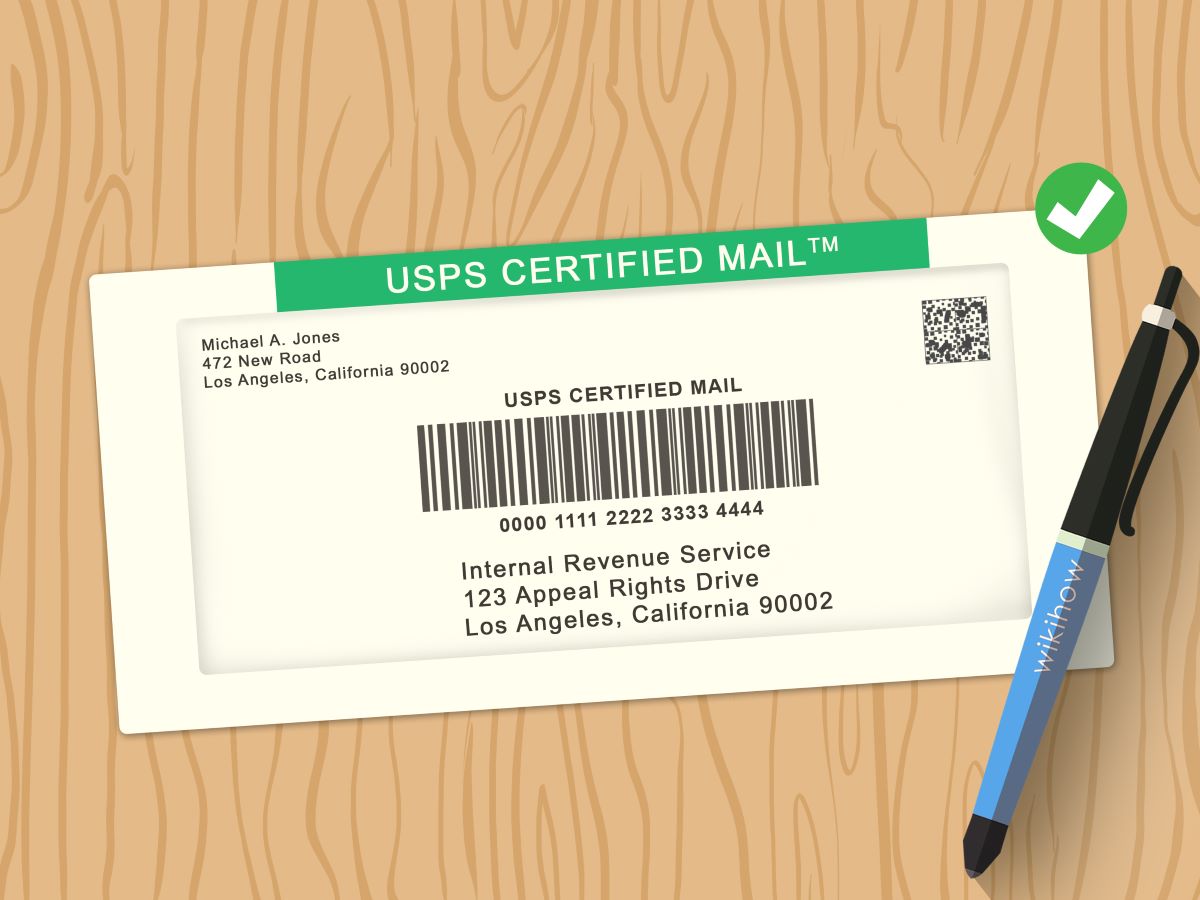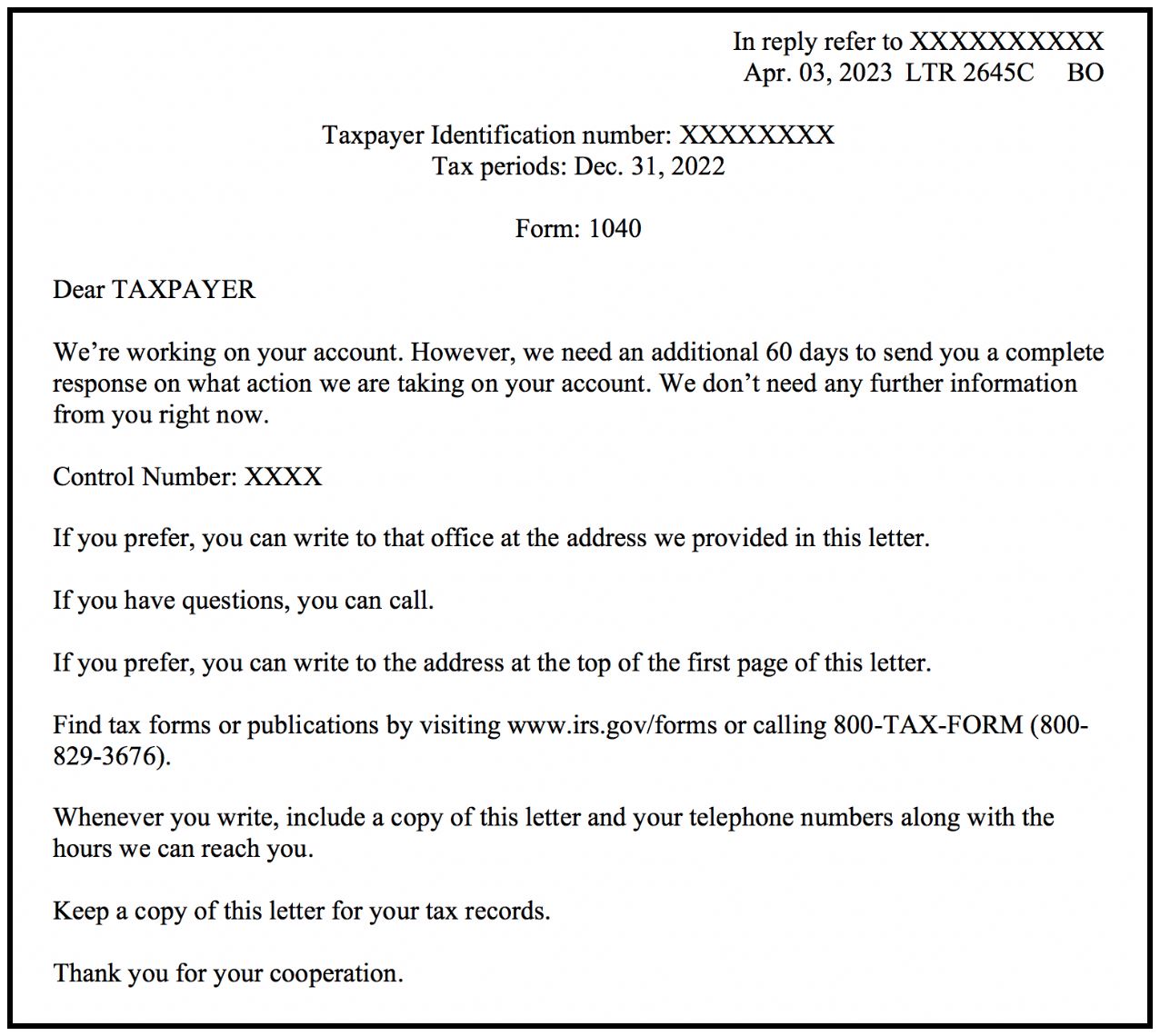

Finance
How To Write A Letter To Cancel Insurance
Published: November 21, 2023
Learn how to write a concise letter to cancel your insurance policy. Get expert tips and advice on managing your finances.
(Many of the links in this article redirect to a specific reviewed product. Your purchase of these products through affiliate links helps to generate commission for LiveWell, at no extra cost. Learn more)
Table of Contents
- Introduction
- Step 1: Gather Information
- Step 2: Review Insurance Policy Terms and Conditions
- Step 3: Locate Contact Information for Insurance Company
- Step 4: Compose the Letter
- Step 5: Include Relevant Policy Details
- Step 6: State Reasons for Cancellation
- Step 7: Request Confirmation of Cancellation
- Step 8: Provide Contact Information
- Step 9: Proofread and Edit the Letter
- Step 10: Send the Letter
- Conclusion
Introduction
Canceling insurance can be a daunting task, but it’s something that many individuals may need to do at some point in their lives. Whether it’s due to a change in circumstances, finding a better coverage option, or simply wanting to switch providers, knowing how to write a letter to cancel insurance can help simplify the process.
In this article, we will guide you through the step-by-step process of writing a letter to cancel your insurance policy. From gathering the necessary information to composing the letter and sending it to the insurance company, we will provide you with valuable tips and insights to make the cancellation process as smooth as possible.
It’s important to note that canceling insurance policies can have financial implications and may result in the loss of coverage. Therefore, it’s crucial to review your policy’s terms and conditions and consider alternative options before proceeding with cancellation. Additionally, it’s always a good idea to have another insurance policy lined up to ensure you stay protected.
Now, let’s dive into the steps involved in writing a letter to cancel insurance.
Step 1: Gather Information
The first step in the process of canceling your insurance policy is to gather all the necessary information. This includes the policy number, effective dates, and any relevant personal details. Having this information readily available will make it easier when composing the cancellation letter and contacting the insurance company.
Start by locating your insurance policy documents. These can usually be found in a physical folder or in your email inbox if you received digital copies. Look for any paperwork or correspondence that includes your policy number, policyholder details, and effective dates.
If you’re unable to locate your policy documents, don’t worry. You can still gather the necessary information by contacting your insurance agent or the insurance company directly. They will be able to provide you with the required details to proceed with the cancellation process.
It’s also a good idea to keep any previous correspondence with the insurance company regarding your policy. This can include emails, letters, or even notes from phone conversations. Having this documentation handy can help provide clarity and context when discussing your cancellation with the insurance company.
By gathering all the relevant information beforehand, you’ll be well-prepared to move on to the next steps in canceling your insurance policy.
Step 2: Review Insurance Policy Terms and Conditions
Before proceeding with the cancellation, it’s essential to carefully review the terms and conditions of your insurance policy. Understanding the cancellation policy will help you determine any potential penalties or requirements that need to be fulfilled.
Start by reviewing the policy documents you gathered in Step 1. Look for sections or clauses that specifically outline the cancellation process, including any notice periods or fees. Pay attention to any conditions that may affect your eligibility for cancellation, such as outstanding premiums or claims.
If you have difficulty understanding certain terms or provisions in your policy, consult with your insurance agent or reach out to the insurance company’s customer service. They can provide clarification and answer any questions you may have.
It’s also important to keep in mind that some insurance policies have a minimum commitment period. This means that canceling the policy before the commitment period ends may incur additional fees or penalties. Make sure you are aware of any such provisions and factor them into your decision.
By familiarizing yourself with the terms and conditions of your insurance policy, you can navigate the cancellation process more effectively and make informed decisions about whether to proceed with canceling your insurance.
Step 3: Locate Contact Information for Insurance Company
Once you have gathered all the necessary information and reviewed the policy terms and conditions, the next step is to locate the contact information for your insurance company. Having the correct contact details will ensure that your cancellation request reaches the appropriate department or individual.
Start by checking your insurance policy documents for the company’s contact information. Look for phone numbers, email addresses, or mailing addresses specifically designated for customer inquiries or policy cancellations.
If you’re unable to find the contact information in your policy documents, try visiting the insurance company’s website. Most insurance companies provide a “Contact Us” or “Customer Service” page where you can find the relevant contact details.
Alternatively, you can contact your insurance agent directly. They should be able to provide you with the necessary contact information and guide you through the cancellation process if needed.
When reaching out to the insurance company, be prepared to provide your policy details, including the policy number and your personal information. It’s always a good idea to have this information on hand to expedite the cancellation process.
By ensuring you have the correct contact information for your insurance company, you can proceed to the next step with confidence, knowing that your cancellation request will be directed to the appropriate party.
Step 4: Compose the Letter
Now that you have gathered all the necessary information and located the contact details for your insurance company, it’s time to compose the letter to cancel your insurance policy. Writing a clear and concise letter is crucial to effectively communicate your intention to cancel and ensure that the cancellation process proceeds smoothly.
Start by addressing the letter to the appropriate department or individual. Check your policy documents or contact the insurance company to determine the correct recipient for cancellation requests.
Begin the letter with a polite and professional salutation, such as “Dear [Recipient’s Name]” or “To Whom It May Concern.”
In the opening paragraph, clearly state your intention to cancel the insurance policy. Include the policy number, your name, and any other identifying details to ensure accurate processing.
In the body of the letter, provide a brief explanation for the cancellation. You can mention the reason for canceling, such as finding alternative coverage, financial constraints, or any other relevant factors influencing your decision.
Be concise but detailed enough to convey your reasoning effectively. Avoid using emotional or accusatory language and stick to facts and objective explanations.
Request confirmation of the cancellation in the letter. Ask the insurance company to provide written acknowledgment of the cancellation and ensure that the policy will no longer be active after the effective date of cancellation.
Finally, thank the recipient for their attention and cooperation. Sign off the letter with a polite closing, such as “Sincerely” or “Thank you.”
Remember to keep a copy of the letter for your records and consider sending it through certified mail or with a receipt confirmation to ensure proof of delivery.
By composing a well-written and concise letter, you increase the likelihood of a smooth and successful cancellation process for your insurance policy.
Step 5: Include Relevant Policy Details
As you compose the letter to cancel your insurance policy, it is essential to include all relevant policy details. Providing accurate and specific information will ensure that the insurance company can process your cancellation request smoothly and efficiently.
Begin by clearly stating your policy number at the beginning of the letter. The policy number is a unique identifier that helps the insurance company locate your specific policy among their records. Including this information upfront will help avoid any confusion or delays in processing your cancellation request.
In addition to the policy number, include your full name, address, and contact information in the letter. This information allows the insurance company to easily identify you as the policyholder and verify your request for cancellation.
Furthermore, it is crucial to specify the effective date of cancellation. The effective date is the date on which the cancellation will take effect and your coverage will cease. Be sure to review your policy’s terms and conditions to determine if there are any notice periods or specific requirements regarding the effective date.
If there are any additional details about your policy that are relevant to the cancellation, such as any riders or endorsements, include them in the letter as well. This will help the insurance company accurately process your request and ensure that all aspects of your policy are canceled accordingly.
By including these relevant policy details in your cancellation letter, you provide the insurance company with the necessary information to swiftly process your cancellation request and close your insurance policy.
Step 6: State Reasons for Cancellation
When writing your letter to cancel your insurance policy, it’s important to clearly state the reasons that have led you to make this decision. Providing an explanation for your cancellation can help the insurance company understand your perspective and may even lead to potential solutions or alternatives to consider.
Begin this step by reflecting on the primary reasons for canceling your insurance policy. These reasons can vary from person to person and may include factors such as finding better coverage elsewhere, changes in financial circumstances, or no longer needing the specific type of insurance.
In your letter, express your reasons with clarity and honesty. Avoid being too detailed or emotional, and focus on providing a concise explanation of your situation. This will help the insurance company better understand your perspective and enable them to address any concerns or issues that may have contributed to your decision to cancel.
If there were any negative experiences or dissatisfaction with the insurance company’s services, you can also include these concerns in a constructive manner. However, it’s important to remain professional and factual in your communication.
While stating your reasons for cancellation, it’s also helpful to mention any steps you have taken to explore other options or find alternative coverage. This indicates that you have made an informed decision and are not canceling on a whim.
Remember, the objective is to clearly communicate your reasons for cancellation in a respectful and concise manner. This will assist the insurance company in processing your request effectively and may even provide them with valuable feedback to improve their services.
By stating your reasons for cancellation in your letter, you can enhance the understanding between you and the insurance company, leading to a smoother cancellation process.
Step 7: Request Confirmation of Cancellation
When writing your letter to cancel your insurance policy, it is crucial to include a request for confirmation of the cancellation. By explicitly asking for written acknowledgment, you ensure that both parties have a record of the cancellation and can avoid any misunderstandings or administrative errors.
In the body of your letter, clearly state your request for confirmation of the cancellation. You can use a sentence like, “I kindly request written acknowledgment of the cancellation of my insurance policy.” This conveys your desire to have a formal record of the cancellation.
By receiving written confirmation, you will have evidence that the insurance company has processed your cancellation request and that your policy will no longer be active. This confirmation can be important for your records, especially if you need to provide proof of cancellation to potential future insurers.
If there are any specific requirements for the confirmation, such as needing a physical copy of the acknowledgment or requesting it to be sent to a different address or email, clearly state these instructions in your letter as well.
Providing clear and explicit instructions for the confirmation will help ensure that you receive the desired documentation in a manner that is convenient for you.
By including a request for written confirmation in your cancellation letter, you can obtain the necessary documentation to confirm the cancellation of your insurance policy and have peace of mind knowing that your request has been formally acknowledged by the insurance company.
Step 8: Provide Contact Information
As you compose your letter to cancel your insurance policy, it’s important to include your contact information. Providing accurate and up-to-date contact details will ensure that the insurance company can easily reach you if they have any additional questions or require further information regarding your cancellation request.
Include your full name, address, phone number, and email address in the letter. This information should be placed either at the beginning or end of the letter to make it easily accessible for the insurance company.
Double-check for any errors or inconsistencies in your contact information to avoid any potential issues in the communication process. It’s important to provide the correct information to ensure a smooth and efficient cancellation process.
If there have been recent changes in your contact information, such as a new address or phone number, make sure to update it accordingly in the letter. This will ensure that the insurance company can reach you at the correct contact information.
By providing accurate and updated contact information in your cancellation letter, you enable the insurance company to easily reach out to you and address any questions or concerns they may have regarding your cancellation request.
Step 9: Proofread and Edit the Letter
Before finalizing your letter to cancel your insurance policy, it’s crucial to take the time to proofread and edit it. This step ensures that your letter is clear, concise, and free of any errors that could potentially cause confusion or hinder the cancellation process.
Start by reviewing the content of your letter. Check for any spelling or grammar mistakes, awkward sentence structures, or unclear statements. Read the letter multiple times and consider reading it out loud to catch any errors or areas that need improvement.
Pay attention to the tone and language used in the letter. Make sure that it maintains a professional and polite tone throughout. Avoid using overly emotional or confrontational language that can detract from the effectiveness of your message.
Check the formatting and layout of the letter. Ensure that it is organized and easy to read. Use paragraphs and headings to structure the letter effectively. Consider using bullet points or numbered lists, where appropriate, to present information in a clear and concise manner.
Additionally, verify that all the required information, such as your policy number, contact details, and reasons for cancellation, are included and accurately stated in the letter. Double-check any specific instructions or requests mentioned in the body of the letter to make sure they are clear and unambiguous.
Consider asking a trusted friend or family member to review the letter as well. Fresh eyes can often catch mistakes or provide valuable suggestions for improvement.
By thoroughly proofreading and editing your letter, you can ensure that it is well-written, error-free, and effectively communicates your intention to cancel your insurance policy.
Step 10: Send the Letter
After carefully reviewing and editing your letter to cancel your insurance policy, it’s time to send it to the insurance company. Ensuring that the letter reaches the intended recipient in a timely and secure manner is essential for a smooth cancellation process.
There are several options for sending the letter:
- Physical Mail: Print out the letter and mail it to the insurance company using certified mail or with a receipt confirmation. This provides proof of delivery and ensures that the letter reaches the correct department or individual.
- Email: If the insurance company accepts cancellations via email, you can send a digital copy of the letter. Make sure to keep a copy of the sent email for your records and consider requesting a read receipt if available.
- Online Form or Portal: Some insurance companies have online platforms or portals where you can submit cancellation requests. Follow the instructions provided by the company and ensure that you attach the letter or fill out the required fields accurately.
- Fax: If the insurance company accepts faxes, you can send a faxed copy of the letter. Keep a transmission receipt as proof of delivery.
Before sending the letter, make a final check to ensure that you have included all the necessary documents, such as policy details or any additional requested information. Attach any required supporting documents or forms.
Remember to keep a copy of the letter and any associated documents for your records. This will serve as evidence of your cancellation request, as well as for any potential future reference.
If you haven’t received a confirmation of the cancellation within a reasonable timeframe, follow up with the insurance company to ensure that the cancellation has been processed successfully.
By sending the letter using a reliable method and keeping records of the communication, you can ensure that your cancellation request is properly received and processed by the insurance company.
Conclusion
Canceling insurance policies can seem like a complex and overwhelming process, but by following these steps, you can navigate the cancellation process with confidence and ease.
Throughout this article, we have provided a comprehensive guide on how to write a letter to cancel your insurance policy. From gathering the necessary information and reviewing policy terms and conditions to locating the contact details of the insurance company and composing the letter, each step is crucial for a successful cancellation.
By stating your reasons for cancellation, requesting written confirmation, and providing accurate contact information, you can ensure effective communication with the insurance company and a smooth cancellation process.
Remember, it’s essential to always review the terms and conditions of your insurance policy before canceling and consider alternative coverage options to maintain protection.
Finally, proofreading and editing your cancellation letter and selecting the appropriate method to send it provide the final touches to a well-executed cancellation process.
By following these steps and guidelines, you can navigate the process of canceling your insurance policy confidently, ensuring a smooth transition and the best outcome for your insurance needs.














